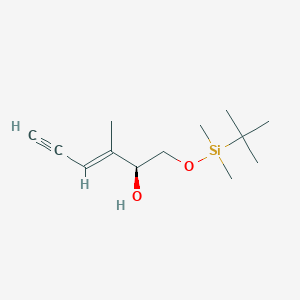|
Name: Acetyl-alpha-methylfentanyl
Type: Synthetic opioid
AKA: N/A

|
|
II. Natural Derivative
Synthetic substance, no natural derivative
 |
|
III. Chemical Profile (IUPAC name)

|
|
IV. History
Acetyl-alpha-methylfentanyl, a synthetic opioid, was first synthesized in the 2010s. It is an analog of fentanyl with modifications to increase potency and duration of action. The compound's introduction to the illicit drug market reflects broader trends in synthetic opioid development. Its potency and association with overdose deaths have led to heightened regulatory measures.

|
|
V. Legal Information
Acetyl-alpha-methylfentanyl is a potent synthetic opioid, often controlled under the Federal Analog Act in the U.S. due to its similarity to fentanyl. Globally, its regulation is increasing in response to concerns about opioid misuse. Trends indicate a move towards stricter controls to address the risks associated with synthetic opioids. [Source: UNODC].
US Federal Schedule - I
Schedule I drugs, substances, or chemicals are defined as drugs with no currently accepted medical use and a high potential for abuse. Some examples of Schedule I drugs are: heroin, lysergic acid diethylamide (LSD), marijuana (cannabis), 3,4-methylenedioxymethamphetamine (ecstasy), methaqualone, and peyote.
Key US Federal Policies:
Controlled Substances Act. Public Law: Public Law 91-513 (text can be found on GovInfo) (https://www.dea.gov/drug-information/csa). Date enacted: October 27, 1970.
|
|
VI. Physical Effects
Acetyl-alpha-methylfentanyl is a synthetic opioid with potent analgesic effects. It acts as a downer, causing sedation and respiratory depression. Short-term use is effective for pain management, but long-term use can lead to addiction, tolerance, and severe health issues. Overdose risks include fatal respiratory depression. Safe use involves strict dosing and medical supervision. Recent research explores its efficacy and risks compared to other opioids.  |
|
VII. Psychological Effects
Acetyl-alpha-methylfentanyl, a potent opioid, interacts with mu-opioid receptors, causing euphoria and significant analgesia. Immediate effects include mood elevation and pain relief, lasting several hours. Long-term use may result in severe addiction, cognitive impairments, and mood disturbances. Research highlights its potent effects and risks associated with opioid receptor interactions and psychological dependence.
 |
|
VIII. Culture
Acetyl-alpha-methylfentanyl is a potent synthetic opioid, structurally similar to fentanyl. These substances have had a significant impact on modern society, particularly in the context of the opioid crisis. Originally developed for pain management, their high potency has led to widespread misuse and overdose deaths. Historically, opioids have been used for centuries in various cultures for pain relief and recreational use. The modern misuse of synthetic opioids like acetyl-alpha-methylfentanyl has led to high-profile overdoses and ongoing debates about drug policy, harm reduction, and the balance between medical necessity and the risk of abuse.
 |
